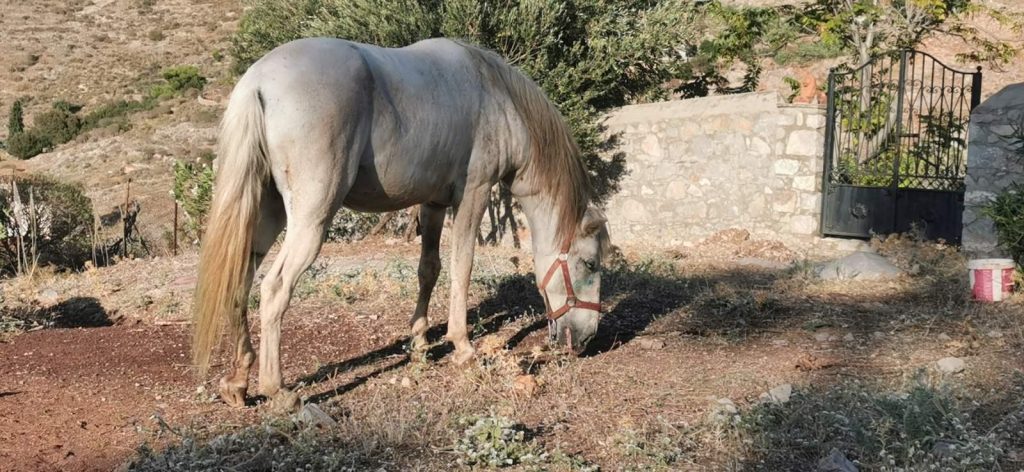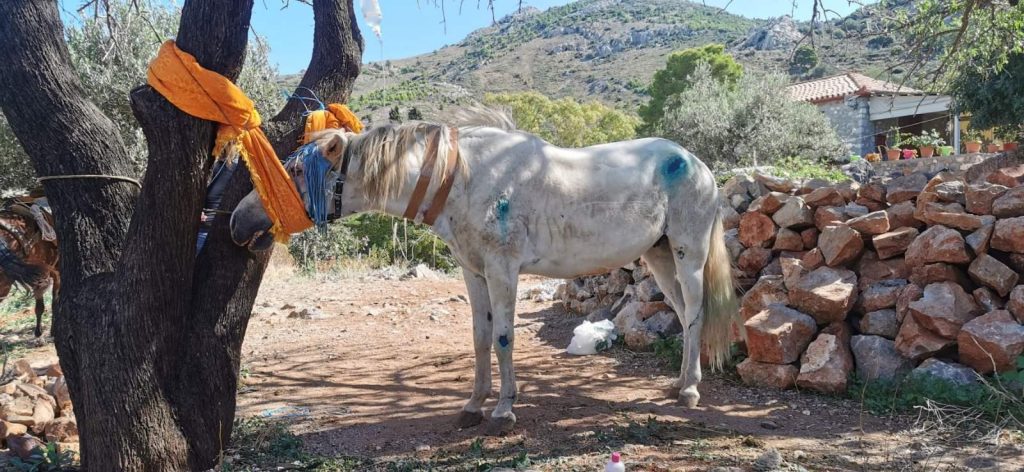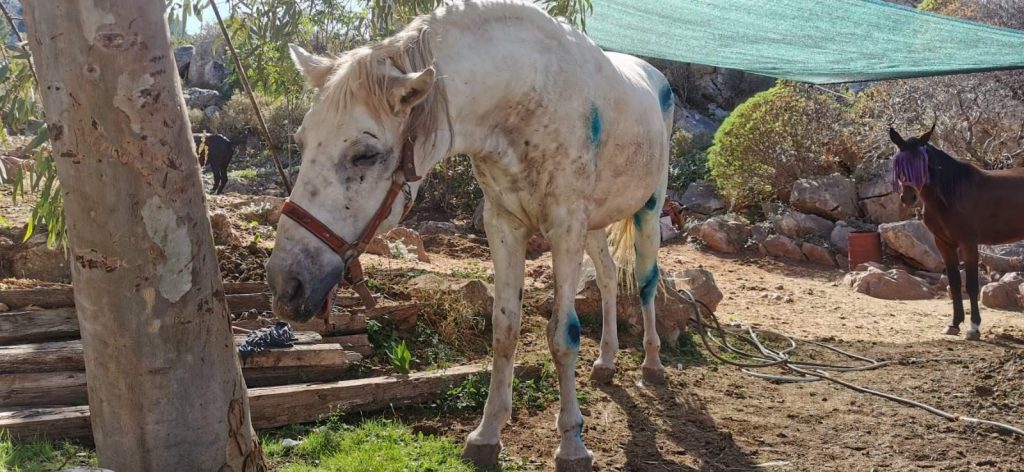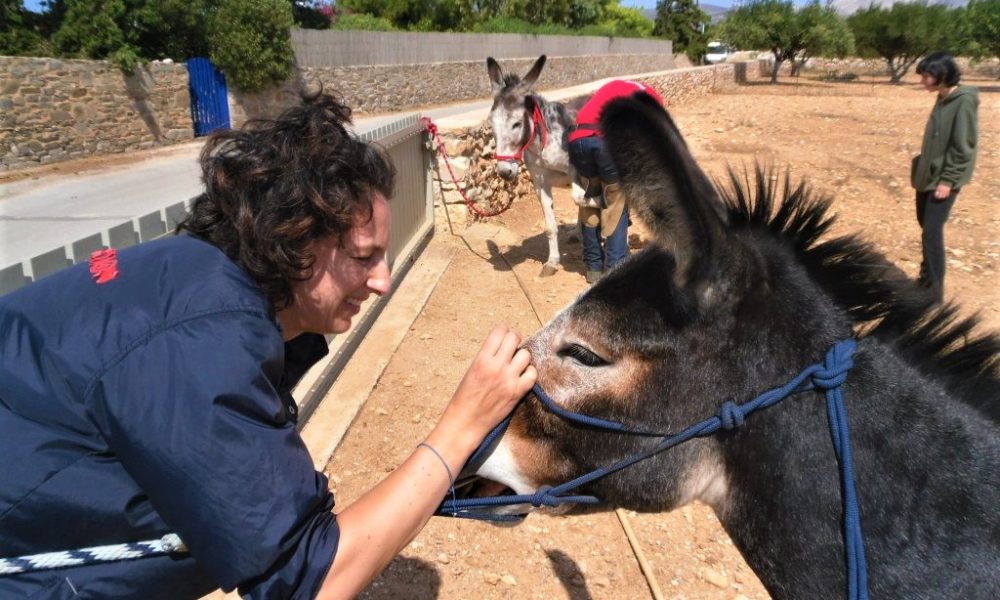EVEN WHEN WE CAN’T BE THERE, LONG DISTANCE SUPPORT FROM OUR PROFESSIONALS CAN SAVE A LIFE.
It was early one morning when our Equine Project Coordinator vet received a phone call from a frantic equine owner on the island of Hydra. One of his horses had been ‘colicking’ through the night; rolling and fighting against the pain. In the morning, the mare was found lying on the ground, tangled up in the rope that had been tethering her. She had injuries to various parts of her body and a slightly swollen neck. With the help of some friends, the owner managed to disentangle her and immediately apply some first aid to her most obvious wounds.
Then he called our vet, Elisa, to find out how he should treat the colic. As there is no vet on Hydra (and on a weekend it was impossible to get one over from the mainland), any veterinary help – even if only over the phone – was desperately needed. We know distanced diagnosis and treatment is far from ideal as there’s no substitute for examining the patient, but when the only alternative is leaving nature to take its course…

Elisa advised medical treatment and practical steps that an owner can take when no vet is available. 3-4 phone calls per day and the continuous efforts of the owner and friends, saw the mare over the colic after 48 long hours; it was a great help that a visitor vet happened to be on the island for a few hours and managed with great difficulty (due to lack of equipment and the swollen neck) to get at least a few litres of IV fluids into the patient; the serious danger to the horse’s life had passed by the third day, but there was still a long way to go; although the mare had regained her strength and appetite, it then appeared that she could not lift her head at all, possibly due to a spinal injury, keeping it constantly low on the ground. As a result, her face and whole head had swollen up, and in addition pus was oozing out of one ear.
Elisa also advised a new 10 day course of medication, as well as the construction of a temporary rest area (like a sling or hammock) for her neck – advice that was followed to the letter.

About halfway through the treatment the horse started showing great improvement in her ability to hold up her head and the swelling had completely disappeared. By the end of the week she was able to support her head unaided and the owner began to have confidence in her recovery. Rest, walking, massage, and physiotherapy were offered to the mare by the owner under our vet’s guidance, to help her regain her fitness. But her problems weren’t over yet… swelling was noticed in one of her hocks (i.e. her ankle), due to the serious tendon injuries she had sustained as her tether tightened when she had rolled in her panic, and she was observed avoiding putting weight on the affected leg. More consultations were needed. Medication, cold-hosing, and more rest helped the leg improve.
Since no secure diagnosis and prognosis can be made from a distance and without the help of an ultrasound machine, we will have to wait for a few more weeks/months until we can be confident that the mare has made a complete recovery but it seems to be looking good… so far!







